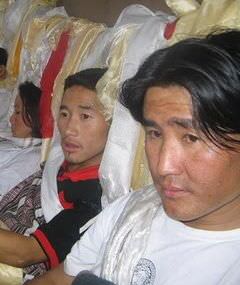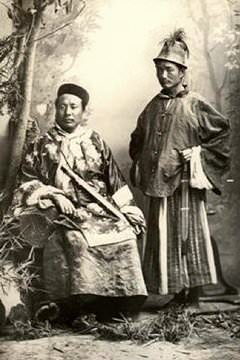

Affected Citizens of Teesta (ACT) - Issues of Concern
PEOPLE'S PERSPECTIVE - CONCERNS
Issues of citizens' concerns with the implementation and environmental clearance without free, prior informed consent of affected people.
Since the merger of Sikkim with the Indian Union, the Government of India has provided many safeguards for the people of Sikkim. The Article 371 (F) of the Constitution is the most important protection given to the people of Sikkim, which reflects the Spirit of 8th May Agreement whereby the old laws and traditions of Sikkim are protected. Like wise the North District of State situated in the remote and inaccessible region and inhabited by the Aborigines of the State is further safeguarded by various provisions, the most prominent being the Notification 3069 which prohibits the settlement of Non-Indigenous people in the region. Further the Dzongu Area, which is inhabited primarily by the Lepchas, is a proscribed area to safeguard the Tribe there and the Areas beyond Toong to Lachen & Lachung fall under the Restricted area.
However, in spite of all these measures, the gradual transfer of population due to various projects in the name of National Interest have almost outnumbered the local inhabitants. The increase in the population has caused serious damage to the environment, demography, culture & religion thus hurting the sentiments of the poor and docile populace and also endangering their survival in their natural habitat. For instance the people of Lachen, Lachung and Chungthang region have already sacrificed 40% of their good cultivatable land in the hilly terrain for the Army and the Border Roads Organization. In fact some of them are almost landless. The Armed Forces & Border Roads Organization not only brought in large number of Laborers but also changed the names of lakes, ridges, villages so much so that the most holy Guru Dongmar Lake was renamed as the Guru Nanak Jeel. Further the holy stone (Leydo) complex at Chungthang was encroached and the name of Chungthang was changed into Changithang. All the history connected with Sikkim's Patron Saint Guru Padmasambhava, has been changed and attributed to Guru Nanak thus erasing the factual history of the place.
Further, the most recent cases of Neglect of the local protection has been done by the NHPC, which executed the Rangit River Hydro Electric Power Project and the Teesta Hydro Electric Power Project Stage V. The NHPC not only defaced the slopes of Kewzing but also changed the name of the place to Rangit Nagar. The Diversion of the river there has apparently increased the temperature of the region and also obliterated the entire Bio-Diversity in the catchments area, further bringing in new diseases and other ill effects.
In the case of Teesta State V, the NHPC not only deprived the locals of job opportunity even the displaced persons are yet to be rehabilitated. There are people still knocking at the doors of the NHPC for their legitimate right which are still denied for no faults of theirs.
There have been blatant violations of Environmental and forest laws in this project. Infact the State Government was compelled to file a case four years ago against the project proponent for the violations, and this still remains unresolved. The project has resulted in serious impacts due to tunneling which were not foreseen at the stage of studying the impacts of the project. The indiscriminate disposal of muck into the Teesta river resulted in the breaking down of the Lum bridge which connected the Lum village in Dzongu with the rest of the world.
There have also been severe health impacts at the project site. Inspite of the condition laid down by the Central Government that labourers should be given work permits only after a full health screening and treatment for diseases, this has not been followed at the state level. Therefore, it has resulted in the spread of new diseases in the project area.
Due to the instances cited above and many more which have been brought about due to the carelessness of the implementing agencies of the various projects and inability of the regulatory bodies at the central and state level to safeguard the interests of the people, a fear Psychosis and apprehension has been created in the minds of the people and there is a permanent dislike for large projects. Thus there has been a grave damage caused to implementation of projects and issues of National interest.
In spite of all the concerns and fears of the people, the government of Sikkim has given its consent to build and operate 8 large hydro projects in the ecologically fragile and demographically endangered region of North Sikkim. This is in total disregard of the sentiments of the people of Sikkim. The Government has never bothered to provide information and seek the free, prior and informed consent of the people. Infact the MOUs have been signed without the knowledge of the affected people and the Sikkimese public at large. The cumulative impacts of all these new projects envisaged on the Teesta and her tributaries together Particularly in the Lepcha Reserve of Dzongu is likely to far exceed the impacts on local people than what has taken place so far by all the earlier projects.
Impacts on political Rights
There are also several other apprehensions such as the issue of the dilution of political rights of the people, which has not been addressed at all in the EIA report.
Sikkim has experienced that work force that come in to work on various projects have continued to stay in the state as it offers opportunities of work. This has affected the social, economic and political balance of the state and has put great pressure on the sparse resources and space within the state. The new entrants into the state also earn voting rights and thereby affect the political system here.
a. The State of Sikkim has 32 Assembly seats and one each for the Lok Shaba and the Rajya Shaba. out of the 32 seats, the constitution has 12 seats reserved for the Lepcha-Bhutia community and one for the Sangha (monks). This was done on the basis of the population ratio way back in the 70s. Since then the increase in the population of other communities, mainly due to development projects, has resulted in the questioning of the validity of the ratio of reservation of seats in the Sikkim Assembly. Any further increase of the voters will result in greater marginalization of the indigenous people of Sikkim.
b. In the reserved constituencies, the increase in the number of non indigenous voters will defeat the very purpose of the reservation as once the majority in a constituency is constituted by non indigenous people, the issues and concerns of the indigenous people is sidelined.
c. The imbalance in the percentage of voters at the grassroot level is more severe. As of now, most of the Gram Panchayat/wards are constituted by small numbers of voters. Even a slight change can have serious implications on the political rights of the people at that level.
Political Impact on the Lepchas and Dzongu in particular
The Dzongu Assembly constituency is reserved constituency where in so far Technically only a Lepcha could represent, how ever now due to the new reorganization/delimitation of the assembly constituencies and the possible setting up of the Labour camps and Staff colony of the power Projects in the areas around Mangan, Thingchim and Mangshila will not only enable a non Lepcha to contest in that constituency but due to the infusion of the more non Lepcha voters. It might eventually result in a Lepcha never representing this constituency thereby depriving the Autochthon of the State from ever having an political voice in their own land.
Law and Order Problems
The Environmental and social impact assessment studies do not reflect on the possible law and order implications of such a mega project in a sensitive border region. Moreover, the very concept of a restricted area is defeated when such a large number of outside people are allowed to enter and stay in the area for a long stretch of time.

| SATYAGRAHA |
Warriors for a Cause
"I will die but won't allow the mega power projects in Dzongu" - Dawa Lepcha.
Two Lepcha youths from Dzongu rocked the state of Sikkim and the world with their selfless stand against the hydro projects. Dawa T. Lepcha and Tenzing Lepcha went on hunger strike in the spirit of Gandhian Satyagraha from June 22, 2007 to September 27, 2009.
Chronicles of the campaign - and more - at
| TEESTA |
Will the Teesta river survive? In order to construct one kilometer of tunnel, approximately 150 tons of dynamite are required. Imagine how much blasting will be done for 30 power projects! Seventy percent of the river to flow underground!
| DZONGU |
Dzongu in North Sikkim is the holy place for Lepchas spread all over the world. Process has begun for seven mega power projects spanning the length and breadth of this protected area.
| ENVIRONMENT |
Environment Impact Assessment (EIA)
Blatant violations of procedural and environmental norms. Get the distressing facts at our EIA-page.
| TEESTA STAGE V |
Much went wrong during design, assessment and construction of Teesta Stage V HEP. For a truly sustainable and adapted development, a different approach is required.
| VIOLATIONS |
Environment Protection Act (EPA) as well as Forest Conservation Act (FCA) were repeatedly violated by the companies involved. A non-exhaustive listing for Teesta Stage V only (NHPC).
| DOCUMENTS |
• Statements, appeals and proceedings by ACT
• Scientific papers substantiating ACT's concerns
• Press reports covering disproportionate projects in Sikkim and ACT's struggle for protection
| MEDIA |
• Photo-Galleries
• Collection of Documentaries

Lepchas - A vanishing Tribe
© Affected Citizens of Teesta 2007 - 2023
NGOs supporting ACT: Concerned Lepchas of Sikkim (CLOS) - Sangha of Dzongu (SOD) - Citizens Forum of Sikkim (CFS) - Sikkimese Association for Environment
While all the organizations supporting ACT share the common goal of protecting the environment, individual groups can, and sometimes do, differ in their approaches to specific issues highlighted above. The stand taken by ACT does not necessarily includes of everybody in Sikkim and other parts. If anyone wishes to differ, they are welcomed to put forward their views, comments and disagreements to info@actsikkim.com. Everybody is welcome!